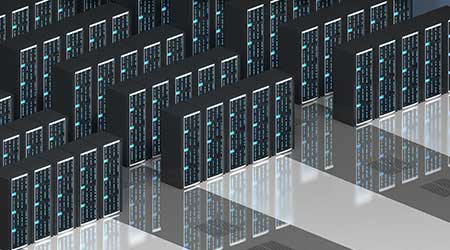Smart Building Use Case: Data Center
Technology rich data centers offer an important real-world use case for smart building strategies.
A data center facility offers an important use case for smart building technology.
Track more assets: Install an indoor positioning system to track occupants based on smartphones or security badges. Add asset trackers to data center racks and servers.
Monitor more assets: Add temperature and humidity sensors to the inlets on cabinets to produce a heat map of the thermal environment and ensure compliance to service level agreements.
Integrate more systems and data: Use software to integrate the building automation system, IT network(s), and security system to realize the full downstream benefits of data aggregation.
Control assets tighter and with more efficiency: Through controls, the HVAC system can be modulated differently to maintain ideal entering conditions on servers regardless of ongoing activities in the data center or ambient weather conditions.
Drill down from big picture to detailed data: Generate heat maps to depict human navigation within the data center. This provides management the data to identify patterns and inefficiencies as well as to provide real-time service-level-agreement compliance reporting.
Find important information quickly: Readily identify who was in the data center last, where they went, and how that correlates to a service-level-agreement violation.
Troubleshoot events with greater speed and accuracy: Recorded thermal map images can be developed for service-level-agreement compliance and can ease root cause analysis efforts. Recorded time-lapse asset tracking maps can be used to identify misplaced hardware.
Comparative and predictive analysis for better decision making: Use of a digital twin (a software tool which integrates a fully-detailed 3D rendering of the facility with real-time operational and maintenance data) can predict shortcomings in infrastructure such as power, cooling capacity, and airflows before critical changes in heat loads within the space actually occur.
Related Topics:















